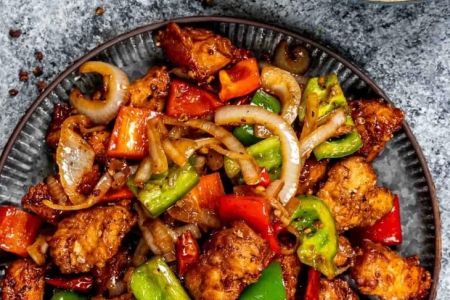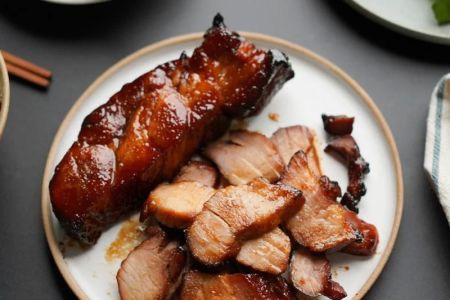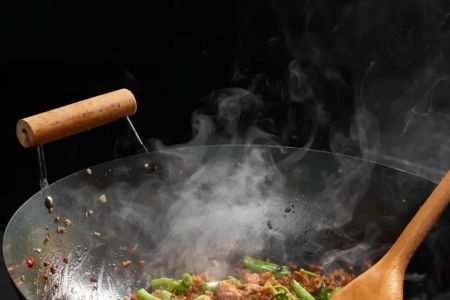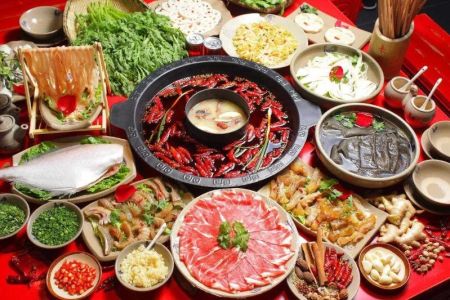What to Know About Chinese Food Culture and Dining Traditions
Chinese food culture is rich, diverse, and full of fascinating traditions that go beyond just the flavors and ingredients. As someone who has had the privilege of exploring both the food and the traditions behind it, I can tell you that understanding Chinese dining customs can deeply enhance your dining experience. Whether you’re enjoying your favorite Chinese takeout or exploring an authentic Chinese restaurant, learning about the culture behind the food opens up a whole new world. Here, I’ll share the key aspects of Chinese food culture and dining traditions, so you can enjoy not just the taste, but also the experience.
1. The Importance of Balance in Chinese Cuisine
One of the most fascinating aspects of Chinese food culture is the concept of balance. In Chinese cuisine, balance is achieved through the careful combination of flavors, textures, and cooking techniques. The idea is that food should be not only nourishing but also harmoniously prepared. There are five key flavors that play a role in this balance:
1.1 Sweet, Sour, Salty, Bitter, and Umami
Each of these flavors plays an essential role in creating the perfect dish. Sweetness is often added through ingredients like sugar or fruits, while sourness might come from vinegar or citrus. Saltiness is typically achieved with soy sauce or fermented products. Bitter flavors are balanced out with herbs or leafy vegetables, while umami – that savory, earthy flavor – comes from ingredients like soy sauce, mushrooms, or fish sauce. When you taste a well-prepared Chinese dish, you can often detect these flavors working in harmony, contributing to an unforgettable dining experience.
1.2 The Role of Fresh Ingredients
Chinese food culture places a significant emphasis on fresh ingredients. Many Chinese dishes are built around seasonal produce, herbs, and proteins. The freshness of the ingredients is key to the flavor and quality of the food. You’ll find that in Chinese cooking, vegetables are often lightly stir-fried or steamed to preserve their freshness and nutritional content.
2. Traditional Chinese Dining Etiquette
Understanding Chinese dining etiquette can make a huge difference in your dining experience. Whether you’re invited to a family meal or dining in a formal setting, knowing a few cultural rules will help you blend in and show respect for the traditions.
2.1 The Importance of Sharing Food
In Chinese culture, meals are typically served family-style, meaning that dishes are placed in the center of the table for everyone to share. Sharing food is a sign of camaraderie and connection, and it’s a key part of Chinese dining etiquette. It’s common to have a variety of dishes in the middle of the table, from rice and noodles to meats, vegetables, and soups. Everyone uses their chopsticks to take portions from the communal dishes, making it a communal and social experience.
2.2 Using Chopsticks Properly
Chopsticks are an integral part of Chinese dining, and there are a few etiquette rules surrounding their use. First, never stick your chopsticks upright into your rice, as it resembles incense offerings at a funeral, which can be seen as disrespectful. Similarly, avoid using chopsticks to point at others or wave them around. When you’re not using them, place your chopsticks neatly on the chopstick rest or across your bowl.
3. Chinese Tea Culture and Its Role in Dining
In China, tea is more than just a drink; it’s a symbol of hospitality, respect, and culture. Tea is often served at the beginning of a meal, and it plays an essential role in the overall dining experience. When you’re invited to a Chinese meal, don’t be surprised if you’re offered tea upon your arrival. It’s a gesture of welcome and good fortune.
3.1 The Ritual of Tea Pouring
In traditional Chinese culture, the way tea is poured can have a significant meaning. It’s not uncommon for the host to serve tea to guests, and there’s a customary way to show respect. If someone offers you tea, it’s polite to tap your fingers on the table in a gesture of gratitude. This gesture comes from an ancient Chinese story, and it’s a way of thanking the person who served the tea.
3.2 The Different Types of Chinese Tea
There are several types of Chinese tea, each with its unique flavors and health benefits. Some of the most well-known types include green tea, oolong tea, and black tea. Green tea is often served during meals and is known for its refreshing taste. Oolong tea, which is partially fermented, has a smooth and floral flavor, while black tea tends to be stronger and more robust. Depending on the occasion and meal, different types of tea might be chosen to complement the food.
4. The Concept of “Yin and Yang” in Food
Another important principle in Chinese food culture is the concept of “Yin and Yang.” This ancient philosophy aims to create balance and harmony by combining opposite forces. In Chinese food, this concept is reflected in the use of ingredients that balance cooling (Yin) and heating (Yang) properties. For example, watermelon is considered cooling, while ginger is heating. In traditional Chinese medicine, food is also thought to have medicinal properties, and choosing the right foods based on your body’s needs is important for maintaining health.
5. Chinese Festivals and Their Food
Food plays a central role in Chinese festivals, and there are specific dishes associated with certain holidays. Some of these dishes carry symbolic meanings, such as longevity, prosperity, and good luck.
5.1 The Lunar New Year Feast
The Lunar New Year, or Spring Festival, is one of the most important holidays in Chinese culture, and it’s celebrated with an elaborate feast. Families gather to enjoy traditional dishes like dumplings (symbolizing wealth), fish (for surplus), and rice cakes (representing prosperity). The meal is not only a celebration of the new year but also an opportunity to honor ancestors and family traditions.
5.2 Mooncakes for the Mid-Autumn Festival
The Mid-Autumn Festival is another significant event in Chinese culture, and one of the most iconic foods during this time is mooncakes. These round, pastry-like treats are filled with a variety of fillings, from lotus seed paste to red bean. Mooncakes symbolize the full moon and reunion, making them a perfect way to celebrate family and unity during this special time.
6. Embracing Chinese Food Culture in Your Own Home
Learning about Chinese food culture and dining traditions isn’t just about enjoying a meal at a restaurant—it’s also about embracing the experience at home. Whether you’re cooking a Chinese dish for the first time or hosting a Chinese-themed dinner, understanding the cultural elements behind the food can make the experience more meaningful. I’ve personally found that embracing these traditions has not only made me a better cook but also a more appreciative diner.
If you’re looking to dive deeper into Chinese food culture or want to try cooking some authentic Chinese dishes at home, I highly recommend checking out Chinese Food. They offer a wide range of authentic ingredients and recipes that will bring the flavors and traditions of China right into your kitchen!






![Top Chinese Restaurants for Authentic Cantonese Cuisine in [Your City]](https://img.gochinarose.com/d33/2507/4157910400_450x300.webp)
